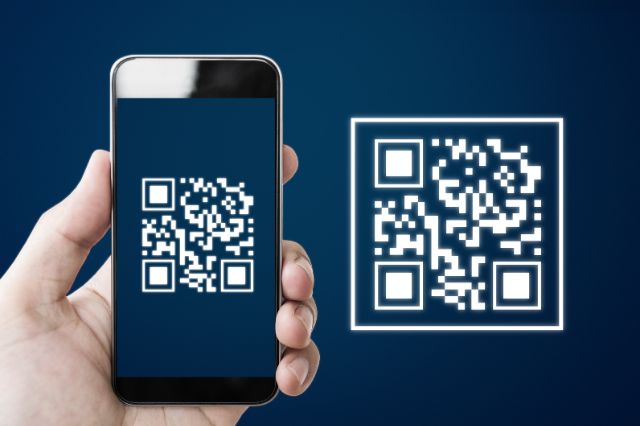Business
5 Ways Businesses Can Reduce Cargo Theft Rates


While you likely do not hear much about it on the news, cargo theft is a rising threat that affects countless companies as well as our nation’s economy and security. The groups who perpetrate these thefts have become increasingly violent and more organized than ever. As a result, the cost of cargo thefts is rising.
The problem impacts every industry, and as criminals become more intelligent and find new ways to secure their targets, business owners must work harder to protect their cargo. Exactly how can businesses reduce cargo theft rates? Let’s examine a few potential ways.
Defining Cargo Theft
Cargo is defined as any commercial shipment that is being moved from its point of origin to its final destination. It may be transported by trucks, rail cars, planes, ships, etc. If it is stolen at any point when in transit, the crime is classified as cargo theft. Cargo theft can happen on the highway, at truck stops and terminals or in storage facilities and warehouses. As long as the theft occurs somewhere between a shipment’s point of origin and its destination, it is considered cargo theft.
Until recently, cargo theft statistics were never listed as a separate reportable category in the Uniform Crime Report, or UCR. Many companies do not report these crimes as a means of avoiding higher insurance rates, bad publicity, embarrassment or damage to their reputation. As a result, the exact amount of money lost each year due to cargo theft is unknown. Experts estimate, however, that cargo thefts result in up to $30 billion in losses annually.
Cargo theft is a huge problem that impacts everyone from big business owners to the consumer purchasing items from the store. Items cost up to 20% more to make up for losses due to cargo theft, and state and local governments miss out on sales tax revenue. Because cargo theft affects virtually everyone, it is important for businesses to be proactive about protecting their shipments. While there is no fail-safe means of protecting every shipment from determined criminals, there are several things you can do to help reduce your chances of falling victim.
Make Use of Technology
Spending money on technology that helps protect loads is never a bad investment. There are several tools on the market that help business owners track stolen vehicles and cargo. If you are not using GPS to monitor the location of your shipments, you are doing your business a disservice.
Geofencing apps are another great way to put GPS tracking to work for your business. These programs notify if a tracked vehicle travels outside of its designated route. In doing so, it alerts you to a potential problem almost immediately. There are also devices that allow you to render a vehicle stationary if you suspect that it has been stolen.
Don’t Forget Low-Tech Security Measures
Things like GPS and devices that allow you to track and shut down vehicles from any location are great, and they should definitely be a part of your company’s security measures. Don’t get so caught up in them, though, that you forget about all the low-tech ways to protect cargo.
Things like king pin locks, padlocks, shipping container security seals, lock bolts, air brake valves and glad hand seals or locks help keep criminals out of your precious corrugated boxes and act as theft deterrents.
Pay Attention to Theft Hot Spots
California reported more cargo thefts than any other state in 2015. Florida, Georgia, New Jersey and Texas are also hot spots for retail theft. When possible, avoid routes that lead through areas that are prone to criminal activity. When cargo is being delivered to or needs to pass through such areas, plan to be there during the daylight hours. Theft is most likely to happen on the weekend, with Friday being the most common day, so try to avoid high-crime areas during these times.
Familiarize yourself with your supply chain partners’ security procedures. Be careful when choosing transportation partners and intermediaries. These companies will likely have control of your shipment until it reaches its final destination, so be sure to only choose those that you can trust.
Carefully Screen Employees and Train Them to Prevent Theft
Unfortunately, inside cargo theft is becoming increasingly common and it may lead to more organized crime. When hiring new employees, in-depth pre-employment screening is vital. Perform a complete background check as well as a criminal records check to minimize your likelihood of hiring unscrupulous employees. If you work with independent owner-operators, make sure they and their employees also submit to extensive background checks.
Training is also extremely important when it comes to preventing cargo theft. Instruct all drivers not to stop for meals or food for at least the first 200 miles after picking up a trailer. Thieves often follow loads when they leave the yard in anticipation of the driver making an early stop. Encouraging your drivers to travel at least 200 miles prior to making a stop helps deter many of these opportunistic thieves who are looking to make a quick score on shipping drums.
Make security a primary element of your business’s culture and encourage everyone involved in the shipping process to be aware of their surroundings. Require them to take steps to avoid theft but remind them that no load is worth sacrificing their own personal safety.
Conduct Periodic Security Audits
Personnel and operations are always changing. Stay on top of those changes and conduct periodic security audits to make sure that your measures are still effective. Criminals are also always finding new ways to steal cargo, so it is crucial to ensure that your security measures are up to fighting the latest theft techniques.
Cargo theft is a serious problem that affects businesses in all industries. The impact is felt by virtually everyone–from high-level suppliers to low-level consumers. While no plan is foolproof, the tips listed above will help you avoid falling victim to this all-too-common crime.
Law
Legal Lifelines: How Personal Injury Attorneys Rescue Your Rights and Recovery


Life can take a sharp turn in the blink of an eye. One moment, you’re going about your day as usual; the next, you find yourself grappling with the aftermath of an injury.
The consequences can be profound, whether it’s a car crash, a workplace mishap, or a slip-and-fall incident. They can affect your physical health, financial stability, and emotional well-being.
In such moments of crisis, personal injury attorneys emerge as the unsung heroes, extending a lifeline to those in need. With their expertise, dedication, and unwavering commitment to justice, these professionals play a pivotal role in safeguarding individuals’ rights and recovery.
The Anatomy of a Personal Injury Case
It’s important to comprehend the components of a personal injury case before diving into the priceless contributions made by personal injury attorneys. Fundamentally, a personal injury claim occurs when someone is harmed as a result of the careless, reckless, or malicious actions of another party.
This harm can encompass a broad spectrum of injuries, ranging from physical to psychological. Moreover, it can occur in various settings, including on the road, at work, or on someone else’s property.
There are various types of personal injuries that you can suffer. Some of these injuries include vehicle accidents, slip-and-falls, medical malpractice, product liability, wrongful deaths, etc.
Once a personal injury occurs, the injured party can file a lawsuit to seek compensation. Consider the example of a recent car accident in Chicago, Illinois (IL). As covered by an NBC Chicago news article, two pedestrians were severely injured in a car crash. The crash occurred in the Ukrainian Village in Chicago, IL.
Both pedestrians were taken to the Stroger Hospital. Treating the injuries required a lot of medical expenses. Since the accident was not the pedestrians’ fault but that of the driver who crashed the vehicle, the victims can seek compensation. This can be done through a personal injury lawsuit.
Personal injury attorneys in Chicago, IL, can help the victims build a strong case against the negligent driver. They can help the pedestrians seek the rightful compensation for their damages.
There are several other things that personal injury lawyers can do to help a victim throughout the legal proceedings.
The Role of Personal Injury Attorneys
Personal injury attorneys are the guiding light in this intricate dance of legal proceedings. They help navigate the maze of statutes, regulations, and precedents precisely and skillfully.
Their multifaceted role encompasses a myriad of responsibilities, each geared towards protecting the rights and interests of their clients.
Legal Expertise and Advocacy
Their profound understanding of tort law is central to personal injury attorneys’ mission. It is the branch of civil law that governs personal injury claims. Armed with this knowledge, they meticulously analyze each case’s circumstances, identifying potential legal theories and avenues for recourse.
Whether it’s establishing negligence, proving causation, or quantifying damages, these legal experts leverage their expertise to construct compelling arguments. Moreover, personal injury attorneys serve as staunch client advocates, tirelessly championing their cause in negotiations and courtrooms.
Negotiation and Resolution
One of the hallmark skills of personal injury attorneys is their adeptness at negotiation. According to Nolo, personal injury negotiation requires contacting the insurance claims adjuster. Moreover, you need to have a settlement amount and avoid jumping on the first offer you get.
Negotiating might sound simple, but it is not. Insurance companies use different tactics to determine a settlement amount. This is where personal injury lawyers can help. Recognizing that most cases are resolved through settlements rather than trials, these attorneys employ strategic negotiation tactics to secure favorable outcomes.
Resource Mobilization and Support
Beyond their legal acumen, personal injury attorneys are a vital source of support and guidance for their clients. Recognizing the emotional and financial strain associated with personal injury claims, these attorneys provide much-needed reassurance and assistance at every step.
From coordinating medical treatment to facilitating communication with medical providers, personal injury attorneys streamline the recovery process. They alleviate the burden on their clients and allow them to focus on healing.
They frequently operate on a contingency fee basis as well, which means they only get paid if and when their clients get paid. This arrangement guarantees everyone, regardless of income level, access to legal representation.
How to Find the Right Personal Injury Lawyer for Your Case
According to IBISWorld, there were 50,693 personal injury lawyer businesses in the USA in 2023. This shows that there are ample options available when it comes to choosing a lawyer for your case.
Finding the right personal injury lawyer for your case is crucial to ensure you receive the best representation and outcome. Here are the steps you can take to find the right attorney:
- Identify your needs: Understand the specifics of your case. Personal injury law covers many situations, including car accidents, medical malpractice, workplace injuries, slip and fall accidents, etc. Determine the type of injury you’ve sustained and the circumstances surrounding it.
- Research: Use various resources to find potential lawyers. You can start with:
- Personal recommendations from friends, family, or acquaintances who have used personal injury lawyers.
- Online directories of attorneys.
- Bar association websites often have directories of lawyers categorized by specialty.
- Online review platforms to see what previous clients have said about different lawyers.
- Check credentials and experience: Look for lawyers who specialize in personal injury law and have experience handling cases similar to yours. Check their credentials, education, certifications, and any awards or recognition they may have received. Experience in the local court system can also be beneficial.
- Evaluate communication and rapport: Pay attention to how well you communicate with the lawyer during the consultation. A good lawyer should listen to your concerns, answer your questions clearly, and make you feel comfortable. Building a rapport with your lawyer is important as you will work closely throughout your case.
- Consider reputation and track record: Look into the lawyer’s reputation within the legal community and their track record of success in handling personal injury cases. You can search for any disciplinary actions or complaints against the lawyer through the state Bar Association.
- Trust your instincts: When choosing a personal injury lawyer, trust your instincts. Select someone you feel will effectively represent your interests and who you believe will work diligently to achieve the best possible outcome for your case.
Frequently Asked Questions
What Are the Benefits of a Personal Injury Lawyer?
Hiring a personal injury lawyer offers numerous benefits, including legal expertise, resource access, peace of mind, etc.
How Do I Prepare to Meet a Personal Injury Lawyer?
The process of hiring a personal injury lawyer usually starts with an initial meeting to analyze your case. Before the meeting, you should gather relevant evidence, note down any details, and prepare questions to ask.
What Are the Most Common Types of Personal Injury Cases?
Personal injury is a broad area of law encompassing different types of cases. Some of the most common types of personal injury cases include vehicle accidents, slips and falls, medical malpractice, and product liabilities.
To conclude, personal injury attorneys serve as beacons of hope, guiding injured individuals through the labyrinth of legal proceedings. These legal lifelines play a pivotal role in safeguarding the rights and recovery of those grappling with the aftermath of accidents and injuries.
Personal injury attorneys embody the essence of justice as pillars of support and agents of change. They ensure that no injury goes unanswered and no injustice goes unchallenged. In the grand tapestry of the legal landscape, they stand as champions of the vulnerable, illuminating the path to healing, restitution, and redemption.
Business
Innovative Solutions: Harnessing QR Codes for Effective Foodservice Management


The world of food service is constantly evolving, and technology plays a pivotal role in shaping its landscape. QR codes are a versatile and efficient solution among the tech tools that have a significant impact.
This article aims to delve into the multifaceted role of QR codes in revolutionizing food service management, exploring their definition, benefits, implementation strategies, challenges, future trends, and transformative potential.
- Definition and Introduction to QR Codes in Foodservice
At its core, a QR code, or Quick Response code, is a two-dimensional barcode that can store a wide range of information. Initially designed for inventory tracking in the automotive industry, QR codes have swiftly entered various sectors, including foodservice.
- Understanding the Role of QR Codes in Enhancing Foodservice Management
The primary goal of this article is to dissect the significance of QR codes within foodservice, emphasizing their role in optimizing operations, enhancing customer experience, and addressing post-pandemic safety concerns.
Understanding QR Codes in Foodservice
- What are QR Codes?
Quick Response codes, or QR codes for short, are two-dimensional barcodes that can transmit and retain data. QR codes were first created in Japan to track car parts. Still, they have since expanded into a flexible tool utilized in many different industries, including the foodservice industry.
These codes can hold various kinds of data, including text, URLs, contact details, and other digital content. They are made up of black squares organized on a white background. Smartphones and other gadgets with cameras and QR code reading software can quickly scan them thanks to their unique layout.
In foodservice, QR codes have emerged as a modern solution to address multiple operational needs, including menu access, order processing, payment, customer engagement, and more.
Their ease of use and adaptability make them valuable for streamlining processes and enhancing customer experiences in restaurants, cafes, food trucks, and various dining establishments.
- Evolution and Adoption of QR Codes in the Food Industry
The evolution of QR codes within the food industry reflects a remarkable journey from their initial usage as inventory tracking tools to becoming integral components of food service operations.
Initially gaining traction in Asian markets, QR codes gradually expanded their presence worldwide, especially with the increasing ubiquity of smartphones and technological advancements.
Their adoption within the food industry accelerated due to several factors, including the need for contactless solutions during the COVID-19 pandemic, the growing emphasis on enhancing customer experiences, and the drive for operational efficiency.
Restaurants and foodservice businesses swiftly recognized the potential of QR codes in addressing these needs, leading to their widespread integration into various aspects of the industry.
Benefits of QR Codes in Foodservice Management
- The Simplicity of QR Code Creation
One of the standout advantages of QR codes, particularly in the food service industry, is the straightforward and user-friendly process involved in their creation. This simplicity empowers businesses of all sizes to effortlessly incorporate these codes into their operations.
A wide array of online platforms and mobile applications designed explicitly for QR code generation exists. These platforms offer intuitive interfaces, enabling users to create a QR code for a URL easily.
Inputting various data types such as URLs, text, contact details, or other information is a hassle-free process within these platforms.
The customization options provided by these tools are a key feature. Businesses can tailor their QR codes by incorporating branding elements like logos, colors, or designs, ensuring consistency with their visual identity and enhancing recognition.
Typically, the creation process involves a few simple steps: selecting the content type to be encoded, inputting the desired information, and optionally customizing the appearance of the QR code.
Once generated, these codes are readily available for download in multiple formats, ensuring compatibility across various marketing materials, menus, or digital platforms.
- Enhanced Customer Experience: Ordering and Menu Accessibility
QR codes revolutionize the dining experience by simplifying the ordering process and granting patrons convenient access to menus, ultimately elevating customer satisfaction. By seamlessly integrating QR codes into the dining environment, customers can effortlessly access menus by scanning codes placed on tables, menus, or promotional materials.
This eliminates the need for physical menus, reduces paper waste, and allows for real-time product updates or modifications. The ease of access and comprehensive information provided through QR-enabled menus empower customers to make informed choices and accommodate dietary preferences or special requests.
Consequently, this streamlined approach expedites ordering, minimizes waiting times, and enhances overall dining experiences, contributing significantly to customer contentment and loyalty.
- Operational Efficiency: Streamlining Processes and Inventory Management
QR codes are pivotal in streamlining operational processes and optimizing food service inventory management. These codes are efficient tools for simplifying various tasks, including order processing, inventory tracking, and logistical operations.
By integrating QR codes into inventory systems, restaurants and food businesses gain real-time visibility into stock levels, enabling accurate monitoring of product movements and reducing the likelihood of errors or discrepancies. This heightened efficiency translates to reduced waste, optimized stocking levels, and improved inventory turnover rates.
Moreover, QR codes facilitate precise tracking of expiration dates, ensuring that perishable items are managed effectively, thereby minimizing food wastage and maximizing operational efficiency.
- Contactless Payments and Safety Measures in the Post-Pandemic Era
In response to the heightened need for safety measures in the post-pandemic era, QR codes emerge as instrumental tools in facilitating contactless payments and ensuring the safety of both customers and staff.
With the increased emphasis on hygiene and limited physical contact, QR codes enable customers to make secure and contactless payments through their smartphones or mobile payment platforms.
By scanning a QR code displayed at checkout, customers can complete transactions without handling cash or physical cards, reducing the risk of potential viral transmission. This contactless payment method aligns with health protocols and instills confidence in patrons, fostering a sense of safety and reassurance while dining out.
- Marketing and Promotional Opportunities Through QR Code Integration
QR codes present many opportunities for foodservice businesses to engage in effective marketing campaigns and promotional activities. These codes are versatile marketing tools, allowing establishments to link customers to exclusive offers, discounts, loyalty programs, or promotional content.
Businesses can connect seamlessly with their target audience by strategically placing QR codes on marketing materials, receipts, or physical products, driving engagement and brand loyalty. QR codes also facilitate tracking customer interactions, providing valuable data insights businesses can leverage to tailor marketing strategies and enhance customer relationships.
This direct and interactive engagement enhances brand visibility and fosters a more personalized and engaging customer experience, bolstering customer retention and attracting new clientele.
Conclusion
Integrating QR codes emerges as a transformative and indispensable tool in the dynamic realm of foodservice. Throughout this exploration, the multifaceted role of QR codes in revolutionizing foodservice management has been unveiled.
From their origins as inventory tracking tools to integral components within the food industry, QR codes have evolved significantly, becoming catalysts for operational efficiency, enhanced customer experiences, and innovative marketing strategies.
The seamless accessibility afforded by QR codes in ordering processes and menu navigation has expedited service and heightened customer satisfaction. Their instrumental role in streamlining operational processes, optimizing inventory management, and facilitating contactless payments has not gone unnoticed, revolutionizing safety measures in the post-pandemic era.
Moreover, QR codes have opened new avenues for foodservice businesses to engage with their patrons through personalized marketing initiatives, driving customer loyalty and fostering brand connections.
As the foodservice industry continues to evolve, the transformative potential of QR codes remains undeniably influential. Their adaptability and versatility offer a glimpse into a future where technology intersects seamlessly with dining experiences, promising greater efficiency, safety, and engagement for businesses and customers.
Finance
How Cash Buying is Reshaping the Property Selling Process


In recent years, the dynamics of the property market in the UK have undergone a significant transformation, with the rise of cash buying playing a pivotal role in reshaping the traditional property selling process.
This shift has introduced new opportunities and challenges for sellers, buyers, and industry professionals alike, streamlining transactions and altering expectations on both sides of the market.
The Rise of Cash Buying
Cash buying, where a property is purchased without the need for a mortgage, has become increasingly popular. This method offers a stark contrast to the traditional, often lengthy process of property acquisition, which typically involves securing a mortgage, undergoing extensive credit checks, and navigating a maze of legal requirements.
Accelerated Transaction Times
One of the most appealing aspects of cash buying is the significant reduction in transaction times. Without the need to wait for mortgage approvals or navigate the bureaucratic hurdles associated with loan acquisition, cash transactions can often be completed in a fraction of the time required for traditional sales.
This speed and efficiency are not only beneficial for buyers, eager to move into their new homes, but also for sellers who are looking to complete the sale swiftly and with minimal fuss.
The Impact on Market Dynamics
Cash buying has also had a profound impact on market dynamics, particularly in highly competitive areas. Sold online estate agents London captures the essence of the digital transformation in the property market, where platforms now facilitate rapid, direct transactions, often involving cash buyers.
This shift has led to increased liquidity in the market, enabling quicker sales and often resulting in closer to asking price offers, as the traditional barriers to sale are removed.
The Changing Role of Estate Agents
The rise of cash buying has necessitated a change in the role of estate agents. No longer just mediators between buyers and sellers, agents now must navigate a landscape where speed, efficiency, and an understanding of cash transactions are paramount.
Estate agents are increasingly leveraging online platforms to match cash buyers with sellers, streamlining the process, and offering a more dynamic service tailored to the modern market’s needs.
Digital Platforms and Market Access
Digital platforms have become crucial in connecting cash buyers with sellers, offering a broader reach and access to a wider array of properties. This digital shift has democratized access to the property market, allowing for a more inclusive range of participants, from seasoned investors to first-time buyers looking to avoid the traditional mortgage route.
Benefits and Considerations for Sellers
For sellers, the appeal of cash buying is clear: quicker transactions, reduced risk of sales falling through, and the elimination of chain dependencies. However, it’s essential for sellers to conduct due diligence on their prospective buyers, ensuring that funds are verified and the transaction is secure.
Navigating the Future Landscape
As the property market continues to evolve, both sellers and buyers must adapt to the new norms introduced by cash buying. For sellers, understanding the benefits and potential pitfalls of cash offers is crucial. For buyers, the ability to move quickly and secure properties without the need for mortgage approval can be a game-changer, particularly in competitive markets.
A New Era for Property Transactions
The shift towards cash buying is indicative of a broader trend towards efficiency and speed in the property market. As technology continues to advance, we can expect further innovations that will streamline the buying and selling process, making it more accessible, efficient, and transparent for all parties involved.
Beyond the Conclusion: A Glimpse into the Future
As we look towards the future, the landscape of the property selling process will continue to be shaped by the trends of cash buying and digital transformation. This evolution promises a more streamlined, efficient, and flexible market, where opportunities abound for those willing to adapt and embrace the new paradigms of property transactions.
-



 Quotes4 years ago
Quotes4 years ago125 Inspirational Car Quotes and Captions to Celebrate Your New Car
-



 Growth4 years ago
Growth4 years ago188 Deep Hurt Quotes with Images
-



 Quotes3 years ago
Quotes3 years ago148 Romantic Love Quotes for Her from the Heart
-



 Quotes3 years ago
Quotes3 years ago185 Cute Boyfriend Quotes for the Guy You Love
-



 Quotes3 years ago
Quotes3 years ago141 Best Heart Touching Quotes about Love, Life, and Friendship
-



 Quotes3 years ago
Quotes3 years ago134 Time Flies Quotes for the Unforgettable Moments
-



 Quotes3 years ago
Quotes3 years ago122 Inspirational Kite Quotes That’ll Make You Wanna Fly Right Now
-



 Quotes4 years ago
Quotes4 years ago101 Powerful Black Women Quotes to Empower You







